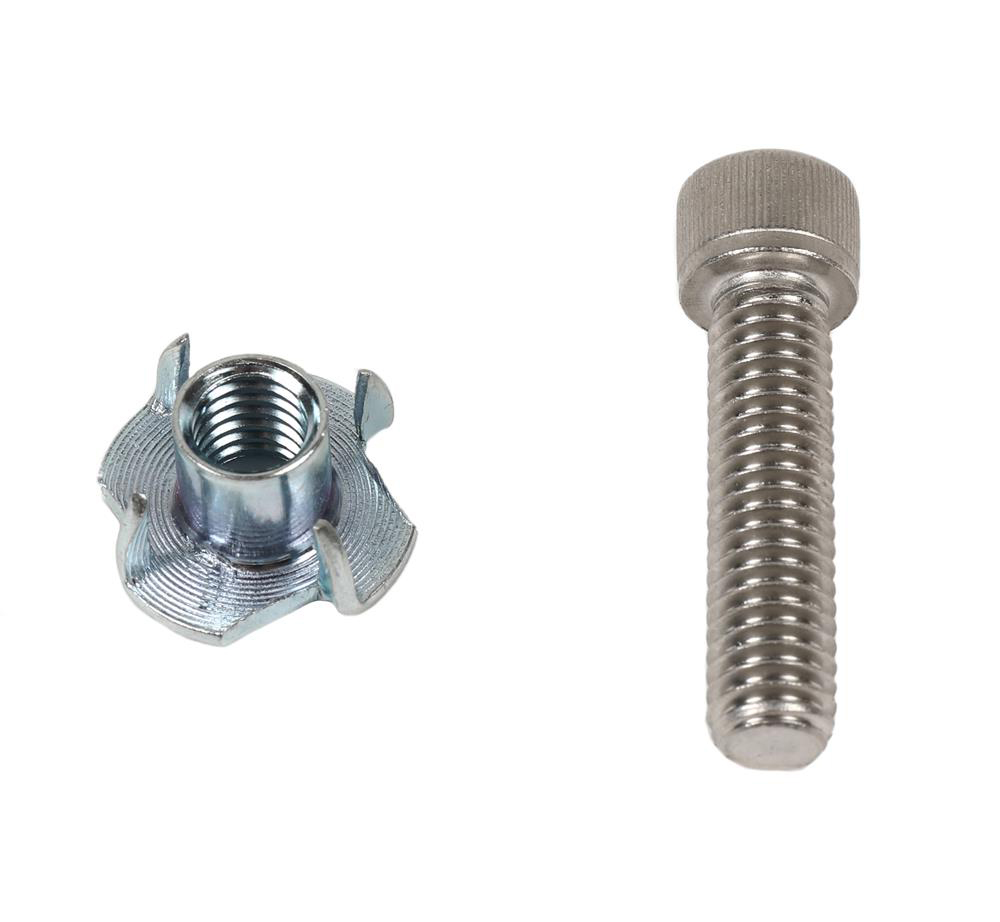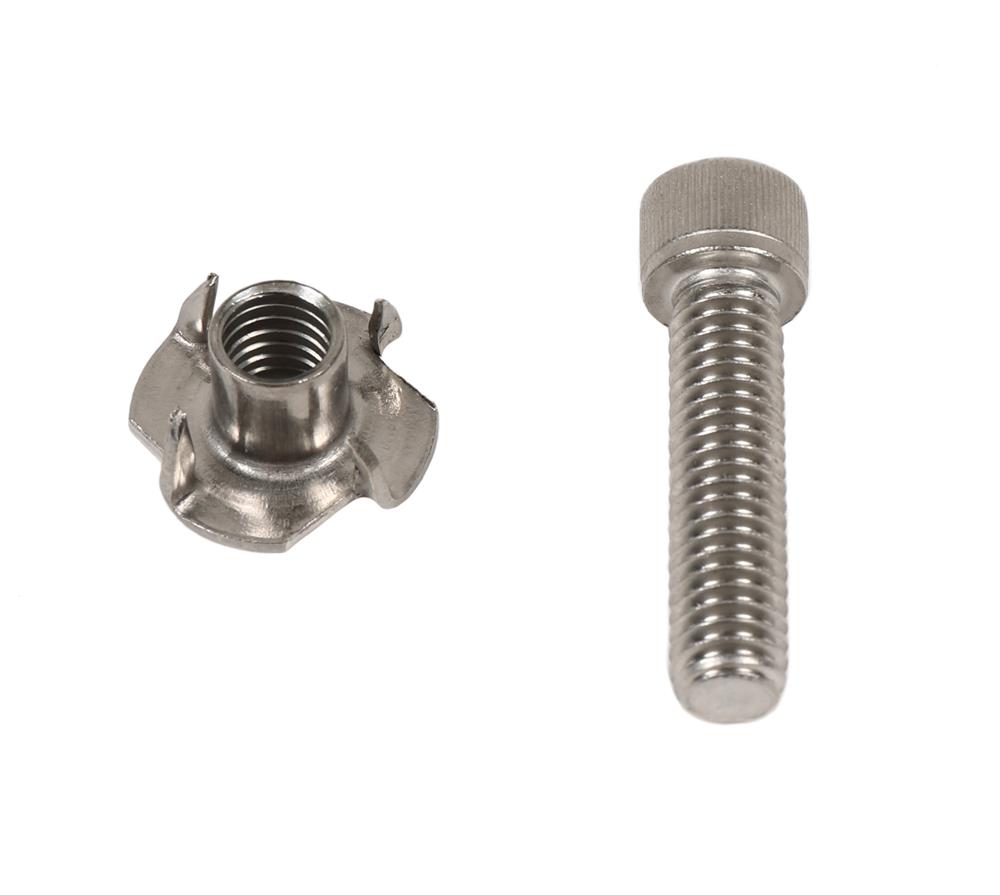Stainless Steel Bolts vs. Zinc T-nuts

Our hardware option for outdoor walls is 304 rated stainless steel bolts with zinc T-nuts. Zinc costs about five times less than stainless steel when comparing 4-prong T-nuts, so it's a more budget-friendly option. Scientifically, 304 rated stainless steel is more positive than zinc. So when stainless steel comes in contact with zinc and they both get wet, the zinc will corrode first. The stainless steel resists this galvanic activity and will not rust.
During the monthly inspections of your wall, keep an eye on those zinc T-nuts. If you see corrosion, you can try to get more life out of them by lubricating them, but you should understand that the bolt will seize the day you go too long. I've seen 1 to 2 years on inland Florida locations with little care, but the more humidity you have, the faster the T-nut will corrode. Bottom line, you will need to lubricate with anti-seize.
Stainless Steel Bolts vs. Stainless Steel T-nuts
Now the science of stainless steel bolts with stainless steel T-nuts. When a 304 rated stainless steel bolt comes in contact with a 304 rated stainless steel T-nut, you now have the danger of seizing. Also, called cold-welding and galling. In layman's terms, they stick together. Stainless steel produces a protective oxide film to prevent corrosion, but this film makes stainless-to-stainless especially prone to galling/seizing/cold-welding.
In the climbing wall world, the solution is to use the proper lubricant on the bolt and T-nut before use and every time you move a hold. Dry film lubricants, lubricants rich in molybdenum disulfide (moly), graphite, mica, and even extreme pressure waxes are effective in reducing the friction caused when stainless meets stainless.
Where to Buy Anti-seize
Creating links to specific products can be tricky with items going out of stock or being discontinued, so we suggest doing your own Google search for "Marine Grade Anti-seize Stainless Steel Lubricant."
What to Do When Your Bolt/T-nut Combination Seizes
If seizing happens and you recognize it when entering or retreating a bolt either to or from a T-nut, stop immediately. There may be a save here. Use "penetrating oil." Spray into the threads and leave for a few hours. Let the oil do its work. Again, use the wonderful internet and Google search "penetrating oil."
Installing Today and Too Lazy to Get Some Anti-seize?
Let's face it, a lot of home wall builders are new to all this and want to get the build done. It's the weekend. Steps get skipped, like using anti-seize. Since you are most likely going to install today, at least use some WD40. You can find it at most hardware or auto part stores. You may get lucky and find anti-seize.
Our last words of advice. Write yourself a note and stick it on your wall. Something like "buy some anti-seize and use it before this wall gets ruined.


.png)
.png)


